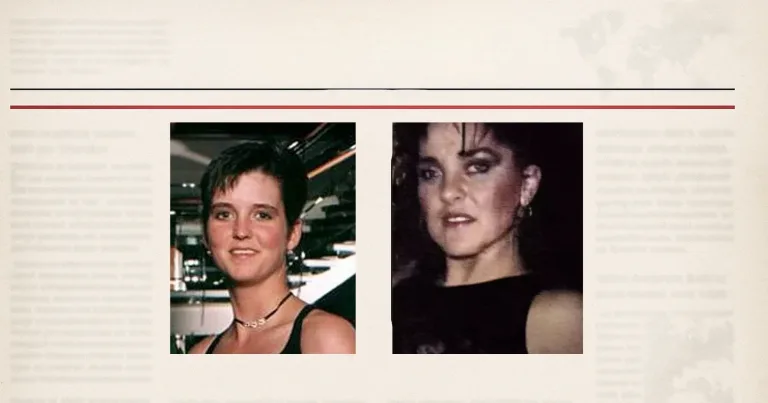Is “Jas” Amy? Photos, Tattoos, and a Timeline That Fits

The “Jas” photos sit at the center of the Amy Bradley conversation. I’ll be honest, the resemblance in those photos grabbed me, but the facts matter more than a first impression. Two lingerie images appeared years after she vanished and were shared with her family by email. Since then they have been replayed on TV and in recent streaming coverage. Here is what can be verified, what remains unproven, and how to weigh the photos against Amy’s documented identifiers without speculation.
What the “Jas” photos actually claim
In late 2005, Amy Bradley’s parents received two photos of a woman labeled “Jas” that were said to come from an adult site in the Caribbean region. The images were later shown on daytime television. A federal agent has said a forensic analyst believed the woman could be Amy. Investigators did not confirm the origin of the photos or tie them to a place or person they could search. Nearly twenty years later, the images are still discussed, but they remain unverified.
What we can verify today
-
The family received two images by email in 2005 showing a woman labeled “Jas.”
-
The photos were broadcast that same year on a national talk show.
-
Amy’s distinctive identifiers are public and detailed:
-
Tasmanian Devil spinning a basketball on her left shoulder.
-
A sun on her lower back.
-
A Chinese character on her right ankle.
-
A gecko around her navel.
-
Navel piercing.
-
-
Publicly shared cropped images from the “Jas” set show a woman with heavier makeup than Amy’s 1998 cruise photos, posing on a bed. The label shown is “Jas.”
What investigators actually said

A federal agent who appears in recent coverage explains that a forensic image analyst reviewed the photos and believed the woman could be Amy Bradley. That is a professional opinion, not a formal identification. Reporting around the same lead notes that investigators could not verify the site of origin, track hosting, or reach a source who could be questioned under oath. The result was a tip that raised hope but produced no search warrants or charges.
Identity and attribution are separate. Resemblance is not proof without a traceable source.
The tattoo and piercing test
Amy’s tattoos and navel ring are the cleanest checks we have, since they are described in public bulletins and appear in family photos from before the cruise. At the time, widely shared cropped images from the “Jas” set did not clearly show skin areas where those tattoos would be visible. Supporters of a match say the crops are too tight or too low-res to settle the question. Skeptics argue that other images from the same shoot show no visible ink at all. Both positions lead to the same point. The available images do not answer the tattoo test in a way that meets a confirmable standard.
The timeline question
There are two clocks to set. First, the family’s email in 2005, followed by a national broadcast that November. Second, claims that the same model set was online earlier, possibly in 2003 or even 2002. If a verified archive ever shows the images live on a site before 2005, that undercuts theories that the set was made after the Bradley case became well known. If no reliable archive appears, then the earlier-date claim remains talk without proof. The timeline matters because it changes how we read motive and context.
Three ways to read the same pictures
1. Mistaken identity of a working model
A different woman who resembles Amy is pictured under a stage name. Makeup, angle, and camera distance amplify the likeness. Strength: at the time, images in wide circulation did not show tattoos or a navel ring. Weakness: a trained analyst thought the face could match.
2. Trafficking or abduction scenario
The woman is Amy under an alias after being moved off the ship. Strength: an expert opinion points toward a facial match. Weakness: no verified source files, no hosting trail, and no independent proof of location.
3. Orchestrated hoax or opportunistic mislead
Anonymous email, adult-site context, and dead hosting links created a lead that felt strong but could not be grounded. Strength: explains the lack of chain of custody. Weakness: does not account for similarities some viewers and an analyst noted.
Myths people repeat vs the checkable record
| Myth that keeps spreading | What the record shows |
|---|---|
| “The photos prove she was trafficked.” | The images have never been verified as Amy, and no site-of-origin has been confirmed. |
| “The FBI officially identified the woman as Amy.” | An analyst reportedly believed the face could match. That is not an official identification. |
| “You can see her tattoos in the pictures.” | Circulated crops do not clearly show the tattoo locations, and higher-resolution originals have not been made public. |
| “The photos were made to mimic Amy.” | Earlier online dates are claimed by some, but they are not proven with reliable archives. |
What would finally settle it
-
Original, high-resolution image files with metadata.
-
Verified server or host records that place the images on a date and at a known location.
-
A site operator or photographer who can provide sworn statements and production details.
-
A confirmed identity for the woman in the photos, matched to real documents.
Care when covering a living family’s case
-
Do not repost explicit images. Describe what is relevant instead.
-
Treat named people as uncharged unless records show otherwise.
-
Keep timeline facts separate from secondhand stories.
-
Avoid blaming relatives for choices made in grief.
Where the evidence stands
The “Jas” photos remain discussed but unverified. The identifiers, dates, and the analyst’s opinion are public, but the images lack a verifiable source and do not show confirmable tattoos. As of now, they have not been confirmed to depict Amy Bradley.
About the author
Angelica Praxides
I’m Angelica, a book lover who lives for quiet libraries, good coffee, and new things to learn every day.
- Languages
- Tagalog, English
- Work Mode
- SEO Writer
- Country
- Philippines
- angelicampworks@gmail.com